Number four! The home straight. While I was working on the first three Peer Gynt quilts, I was contemplating and tweaking the quilt design for the fourth movement of the Peer Gynt Suite 1, In the Hall of the Mountain King. This movement is one of the most well-known pieces of classical music and easily evokes a mental image. This is mine.
Structure and symbology
In the Hall of the Mountain King consists of three stanzas of 24 bars, each stanza essentially a repeat of the themes A A B B A A′. The A theme is four bars long in B minor, and the B theme is four bars long in F♯ major. The stanzas become successively louder and faster:
| Stanza | Instruments | Dynamics | Tempo |
| 1 | Cello, Bassoon | pp | 64 bpm |
| 2 | Strings (pizzicato), Woodwinds | mf | 80 bpm |
| 3 | Strings (arco), Brass | ff | 106 bpm |
After the third stanza is a short coda of orchestral stabs interrupted by a variation of the A theme.
In the Ibsen play that Grieg’s suite was written to accompany, this movement narrates Peer Gynt’s hallucinatory procession through the underground palace of the troll king, culminating in him standing in front of the Mountain King’s throne. I didn’t know this when I first heard the piece; I’d always imagined it as chase music: Peer Gynt is creeping along tunnels undetected, then he moves quickly to keep ahead of followers, then he is running hell-for-leather to escape the hordes that pursue him.
Design
First, a recap of the axioms I developed while making these quilts:
Quilt axioms:
- One tessellating shape per bar.
- One colour per chord.
- Keep similar parts near each other.
- Not much empty space inside.
- Adjacent bars in adjacent shapes.
- Everything has to come from my fabric stash.
In this quilt I would borrow inspiration from all of my previous quilts, and even from Anne Adams’s Unraveling Boléro:
- As in Åse’s Death and Unraveling Boléro, the basic unit is a rectangle.
- As in Åse’s Death, the similarity of bar n to bar n+4 throughout means that bars are best laid out left to right in each row, as in a book.
- As in Anitra’s Dance, dynamics correspond to the brightness of a block.
- As in Morning Mood (the only other movement played with a full orchestra), quilting colour corresponds to the section of the orchestra that carries the melody.
- As in all three quilts, D major is green. (Actually, this happened completely by accident.)
- As in Unraveling Boléro, dynamics correspond to the size of a block.
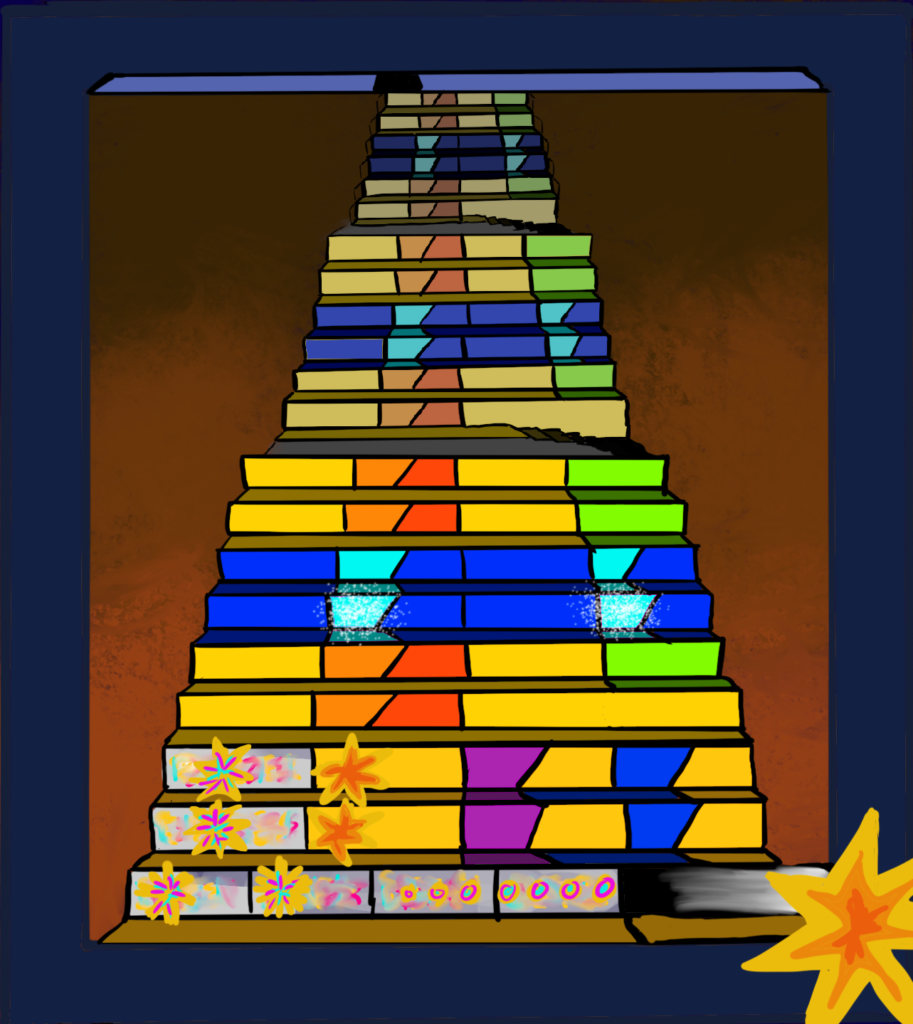
Again, I used Procreate to sketch a design. Each row of four bars is a passage through the underground cavern, a limited-perspective platform game of sorts where the wall behind is the colour of the chord, and the base is the colour of the bass note under the chord (base, bass, get it?). As the movement crescendoes and accelerandoes, the rows become longer and larger. The overall shape resembles a step pyramid, a ziggurat, or, as someone pointed out, a xylophone.
This drawing became more than just a design: I would be piecing this quilt using foundation paper piecing, it being suited to the bespoke nature of the shapes in the design. Printed out at full size, this image became a tracing template for each row in the quilt.
Selecting colours was actually easy: I have ton of single-colour fabrics in my stash, ranging from ultra-bright spectral colours to muted country solids. I could form the same colourways in three different levels of saturation for the three stanzas.
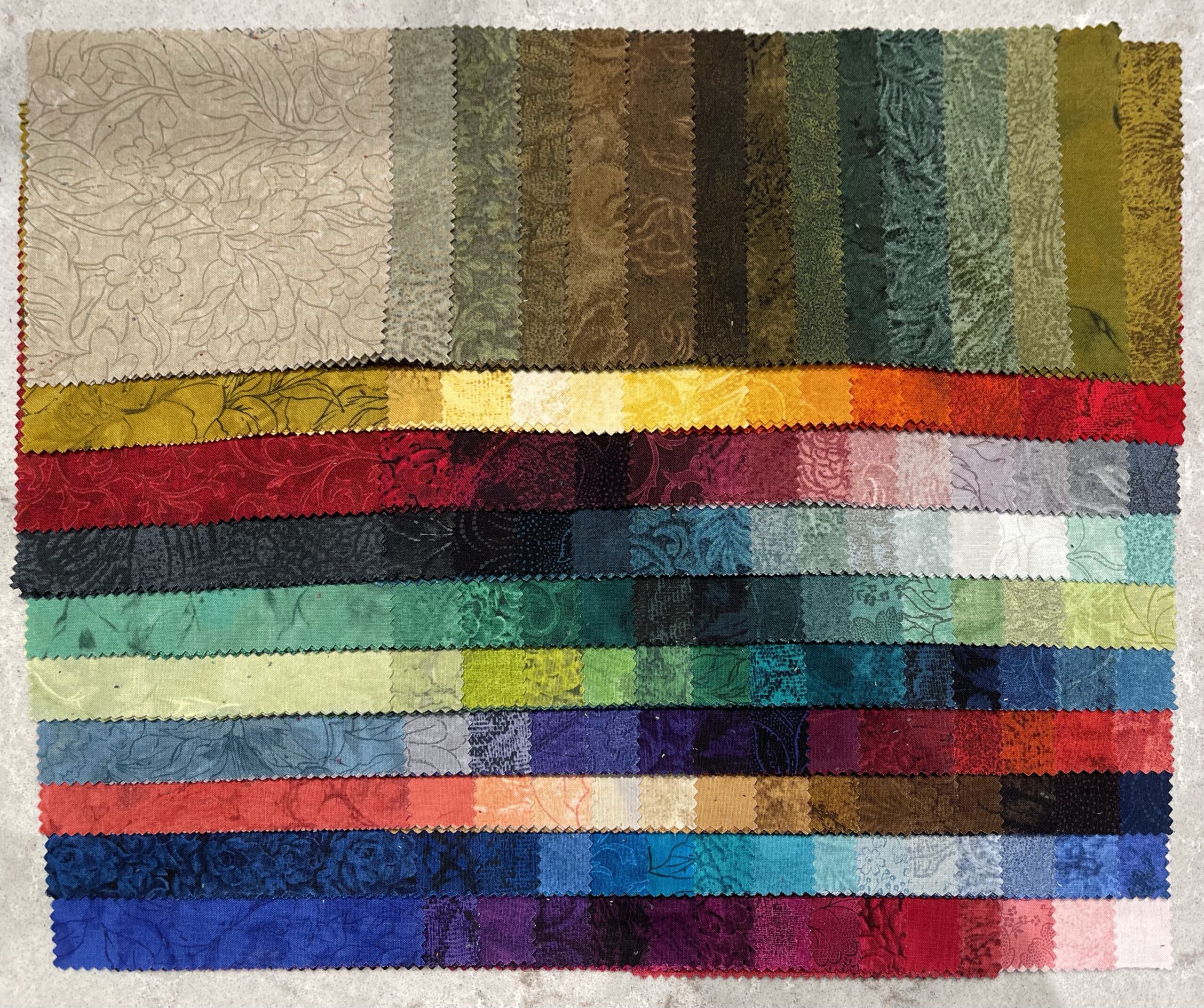
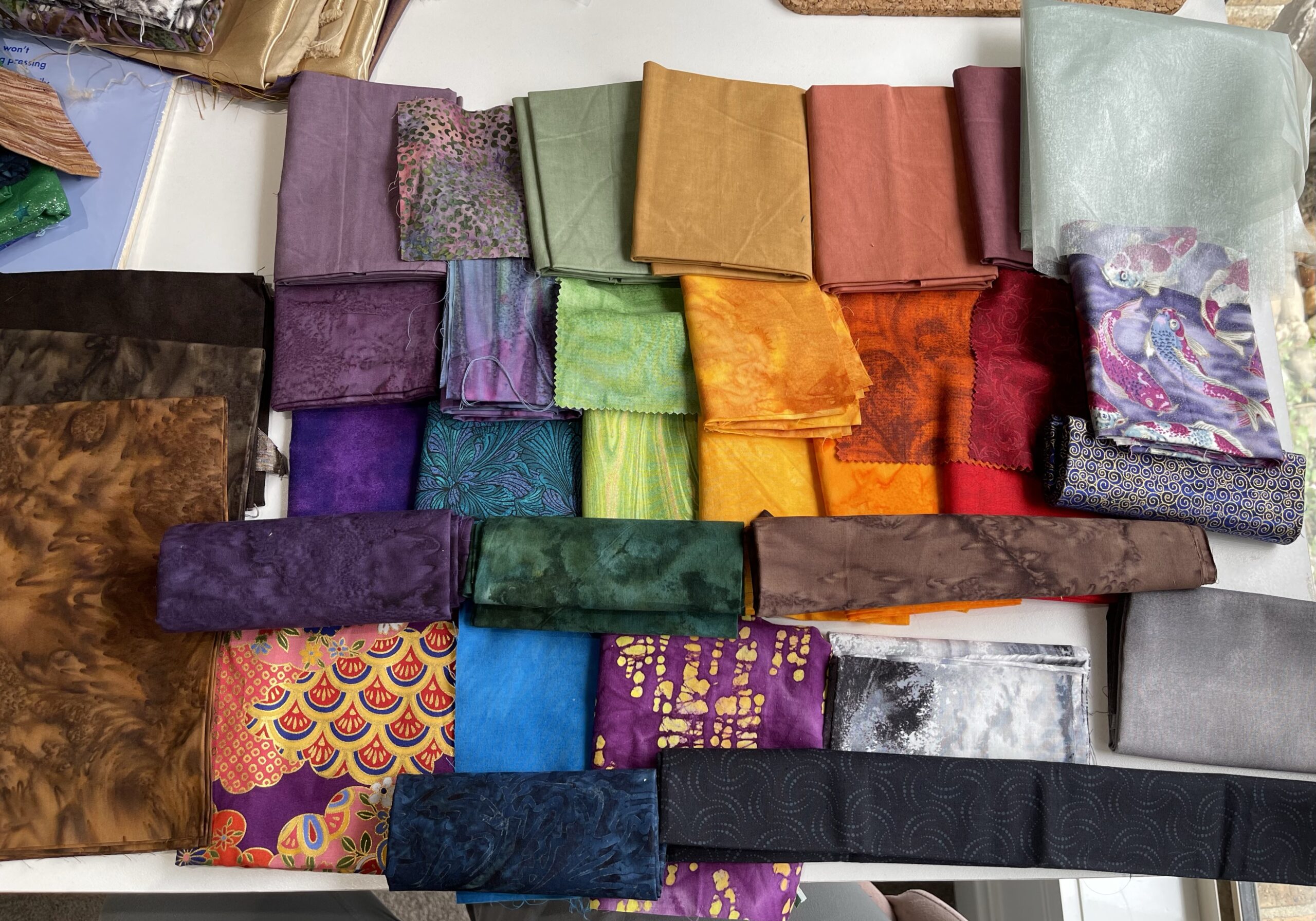
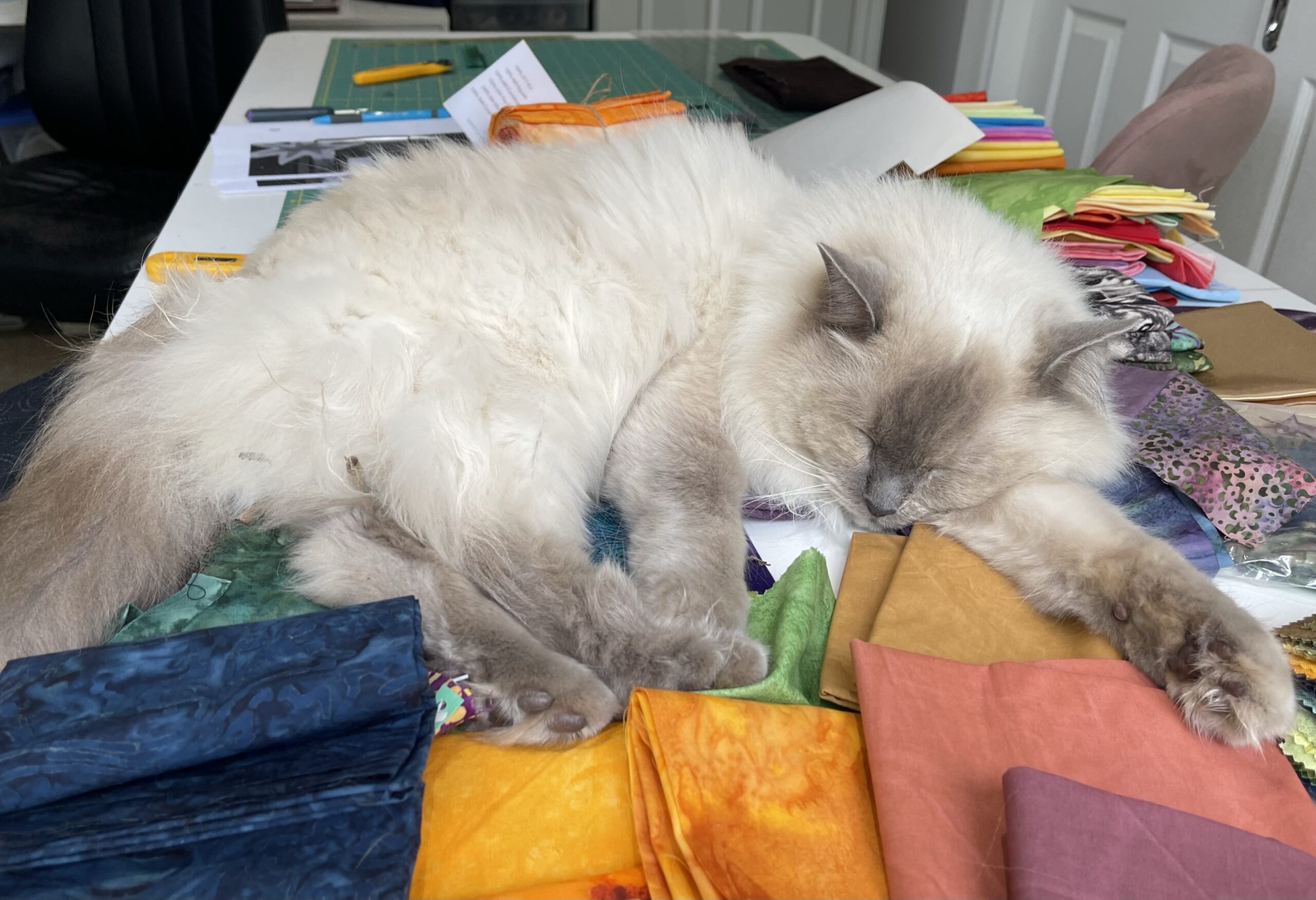
Construction
Tracing each row of rectangles onto foundation paper, the quilt grew slowly. Because the pieces were so minuscule, I got familiar with the Add-An-Eighth™️ Ruler and scant 3 mm seam allowances. Of the four quilts, this one had the most individual pieces of fabric and took the longest to piece. Removing the foundation paper from the rear afterwards is something I do not ever want to relive.
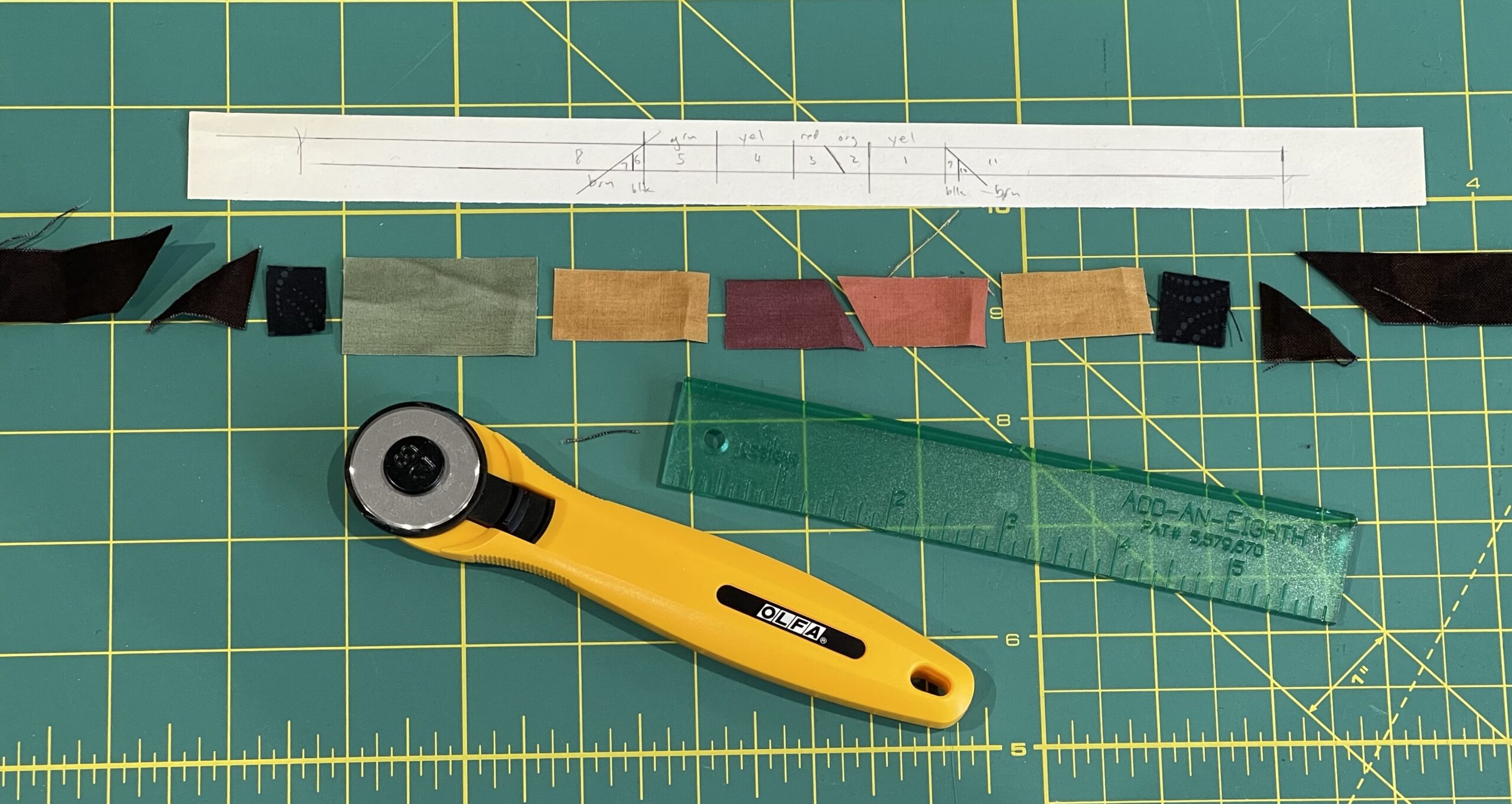
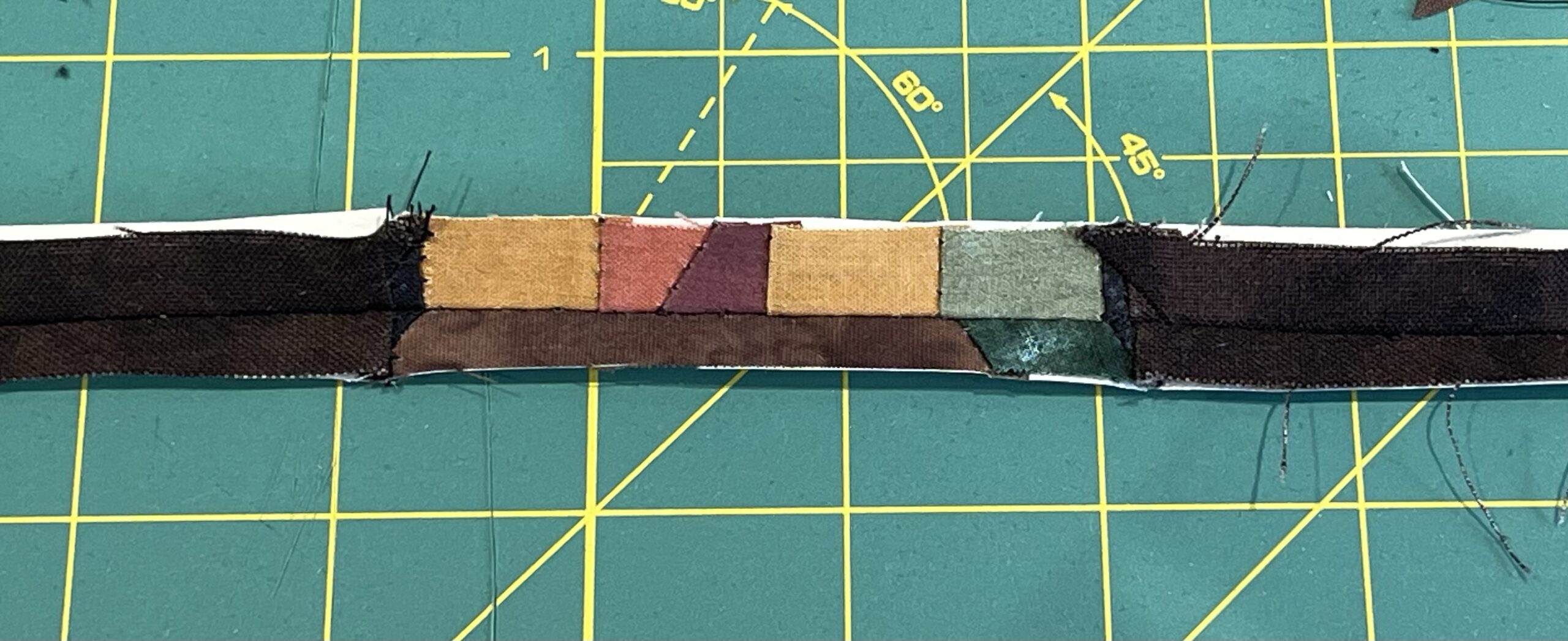
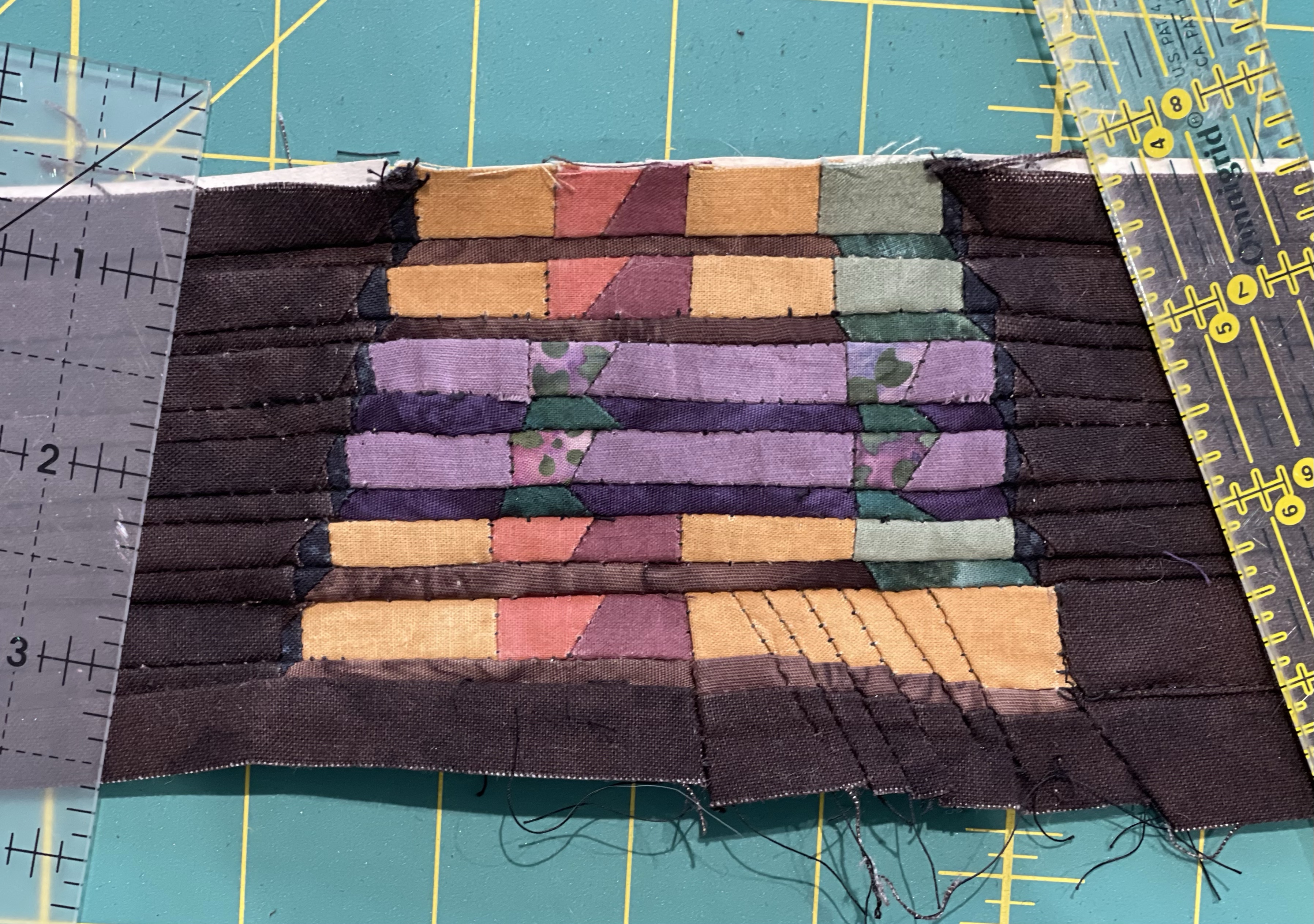
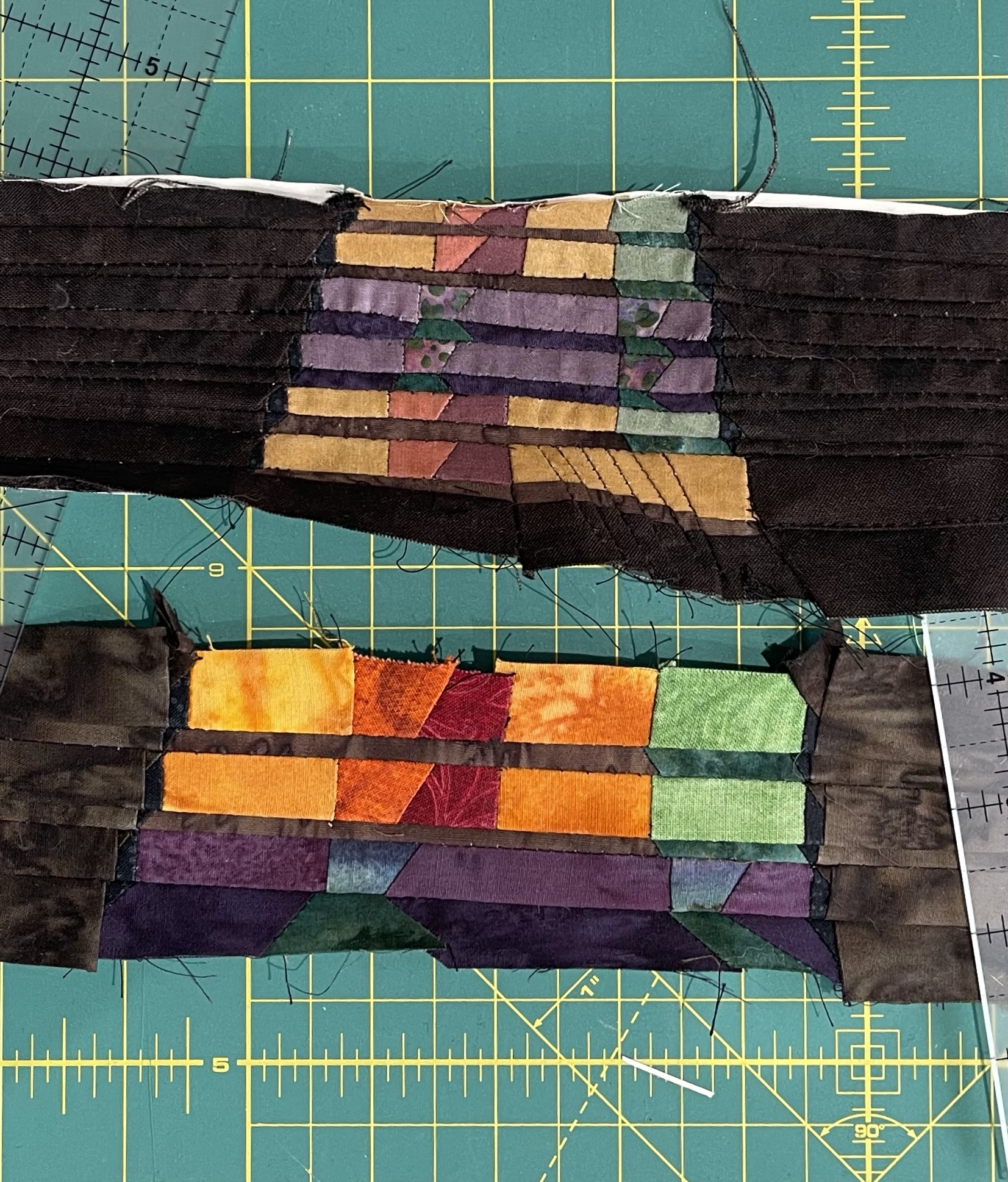
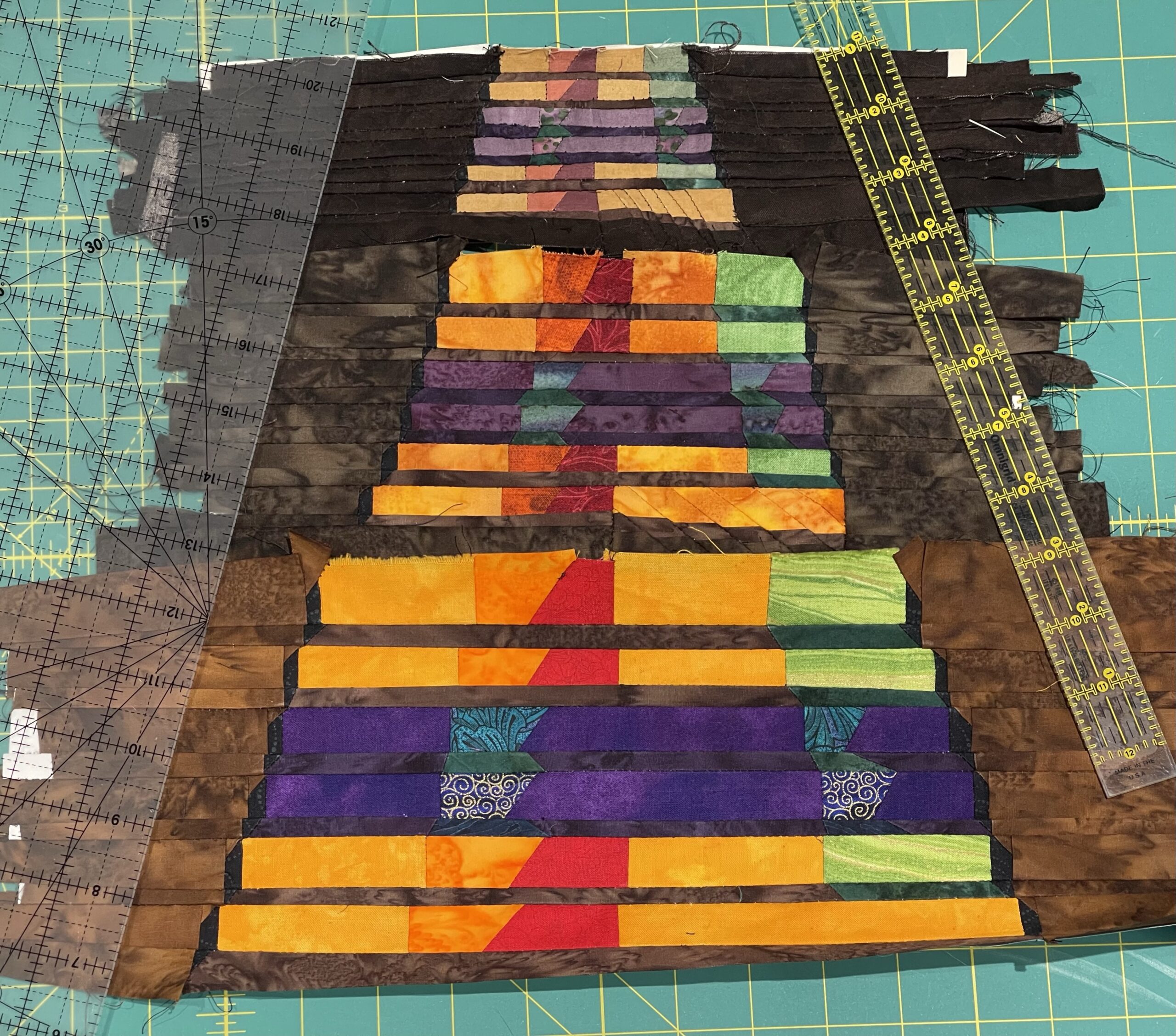
Finishing
The quilt top finished, I went to town with the quilting. The background is heavily quilted in freehand swirls reminiscent of folded rock strata. Each two-bar phrase is quilted in a thread coloured according to the section of the orchestra that carries the melody. In the third stanza, an expected D+ chord is substituted with a D♯m chord—it doesn’t matter how many times I listen to this movement, it still surprises me—so I wanted to mark those bars in a special way. The explosions—actually fussy-cut chrysanthemum prints—are appliquéd on and sewn down with metallic thread.
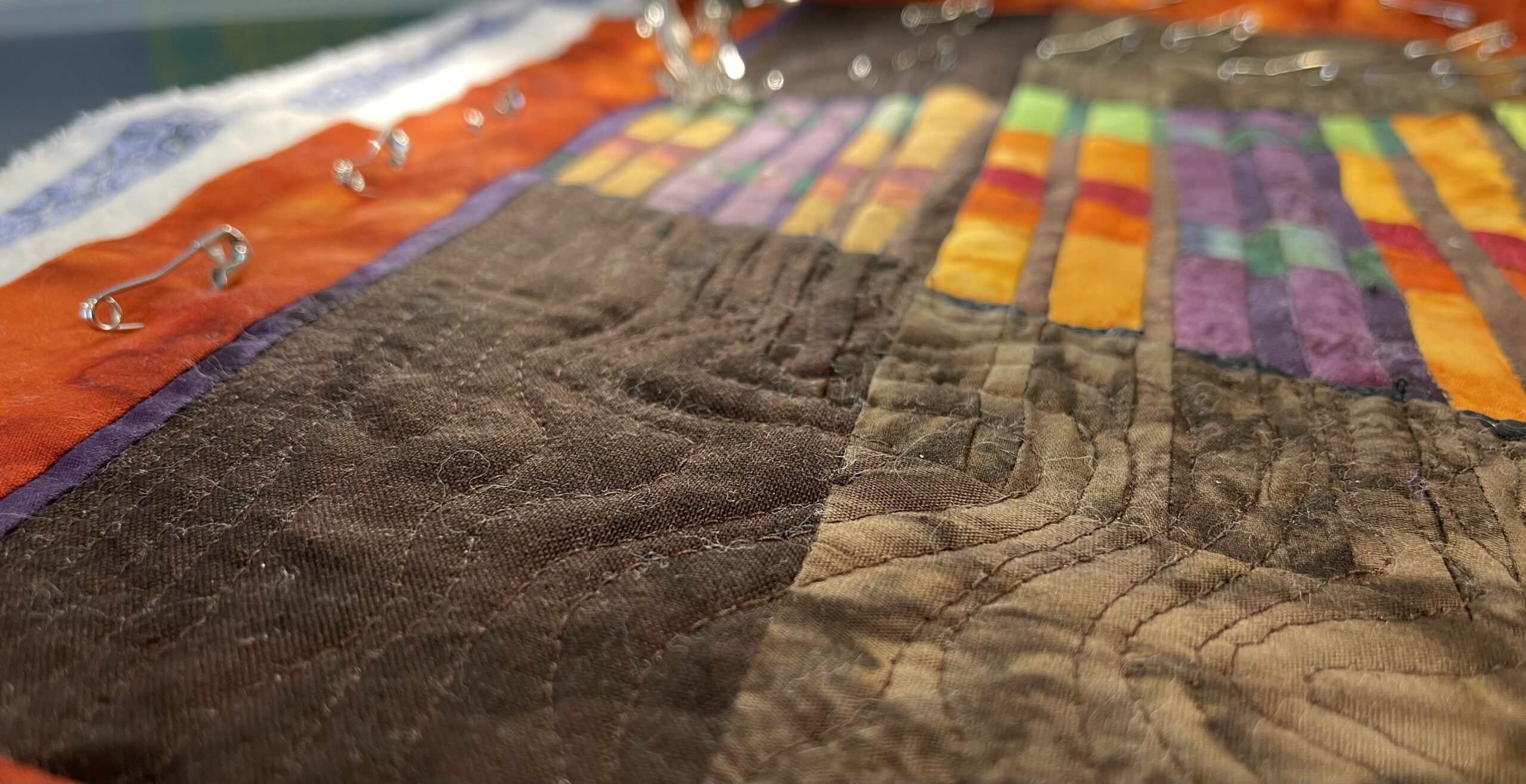
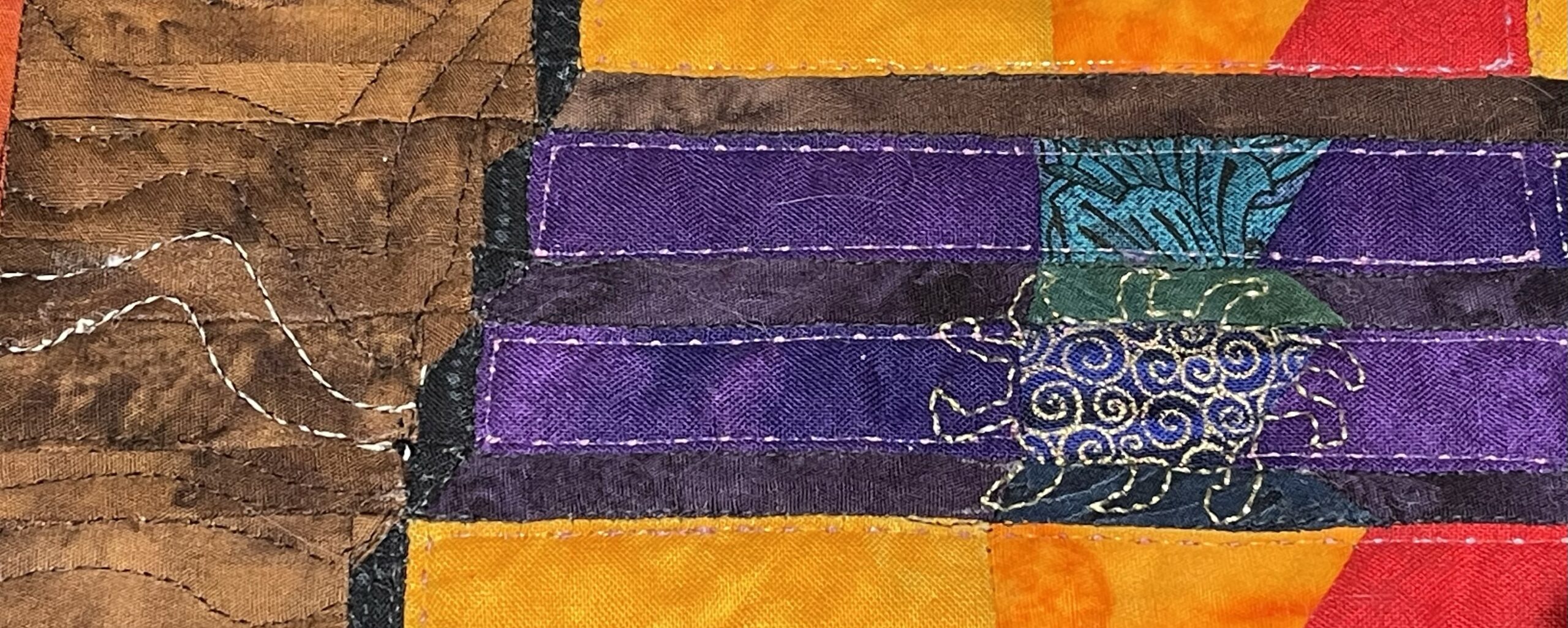
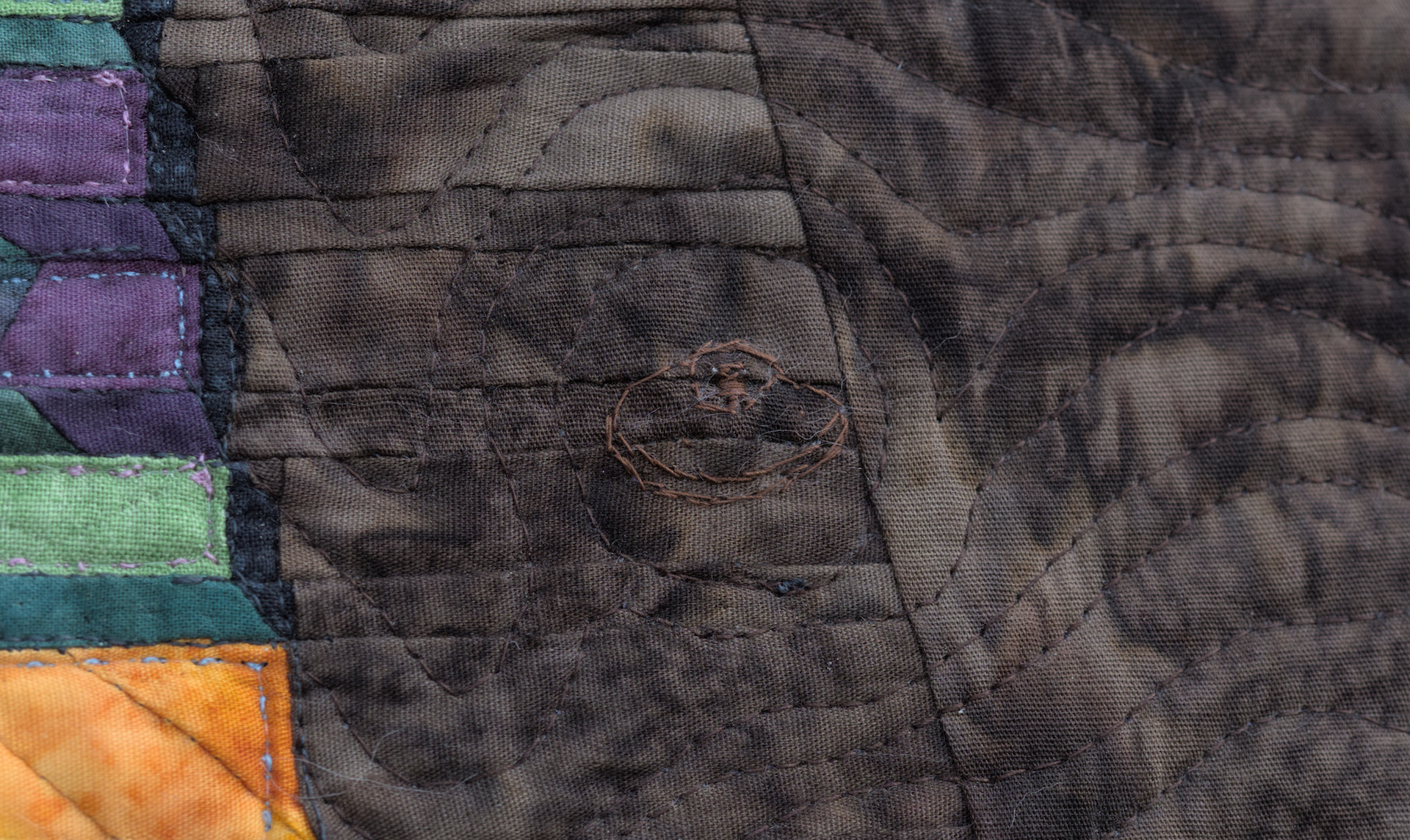
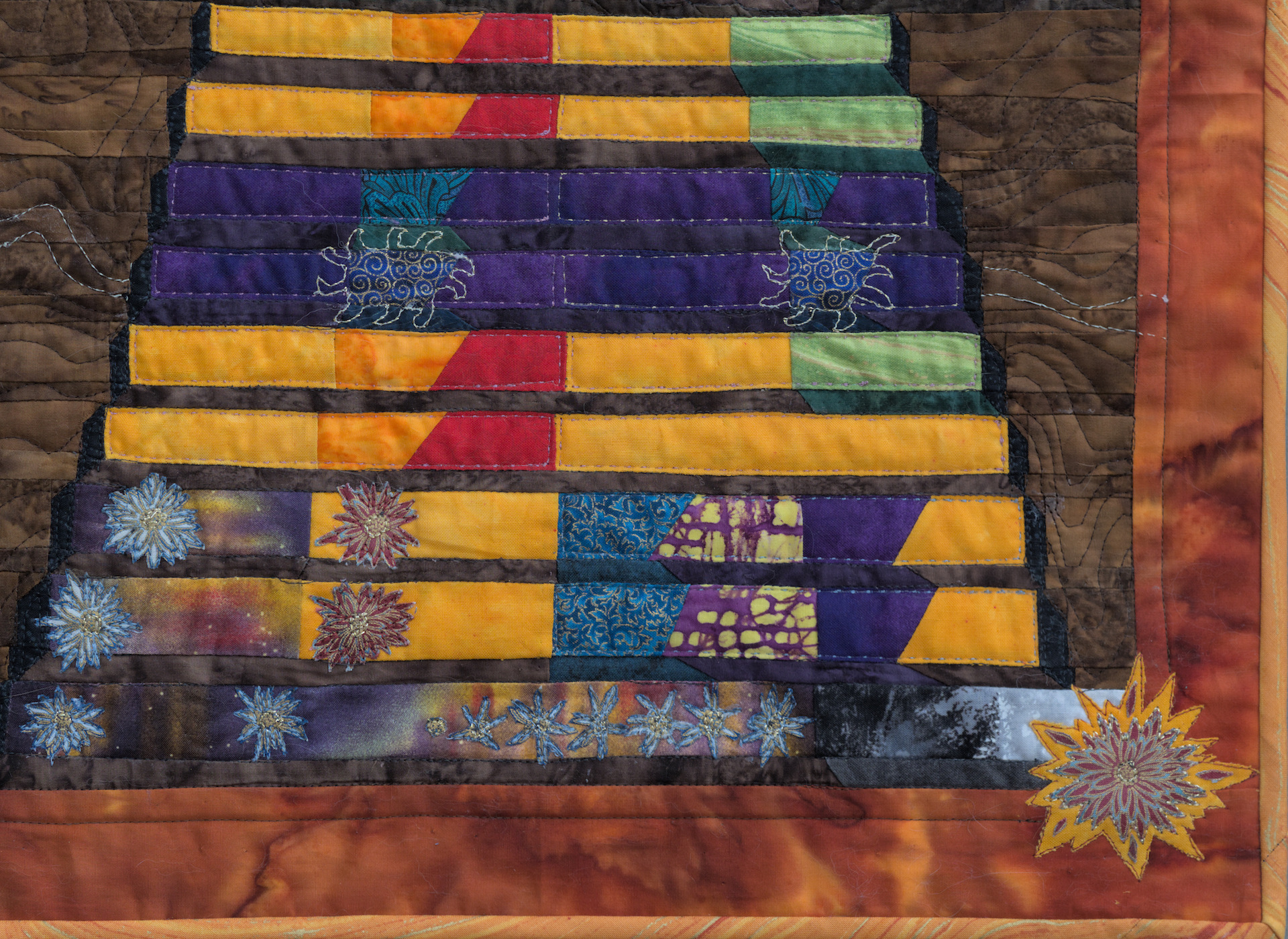
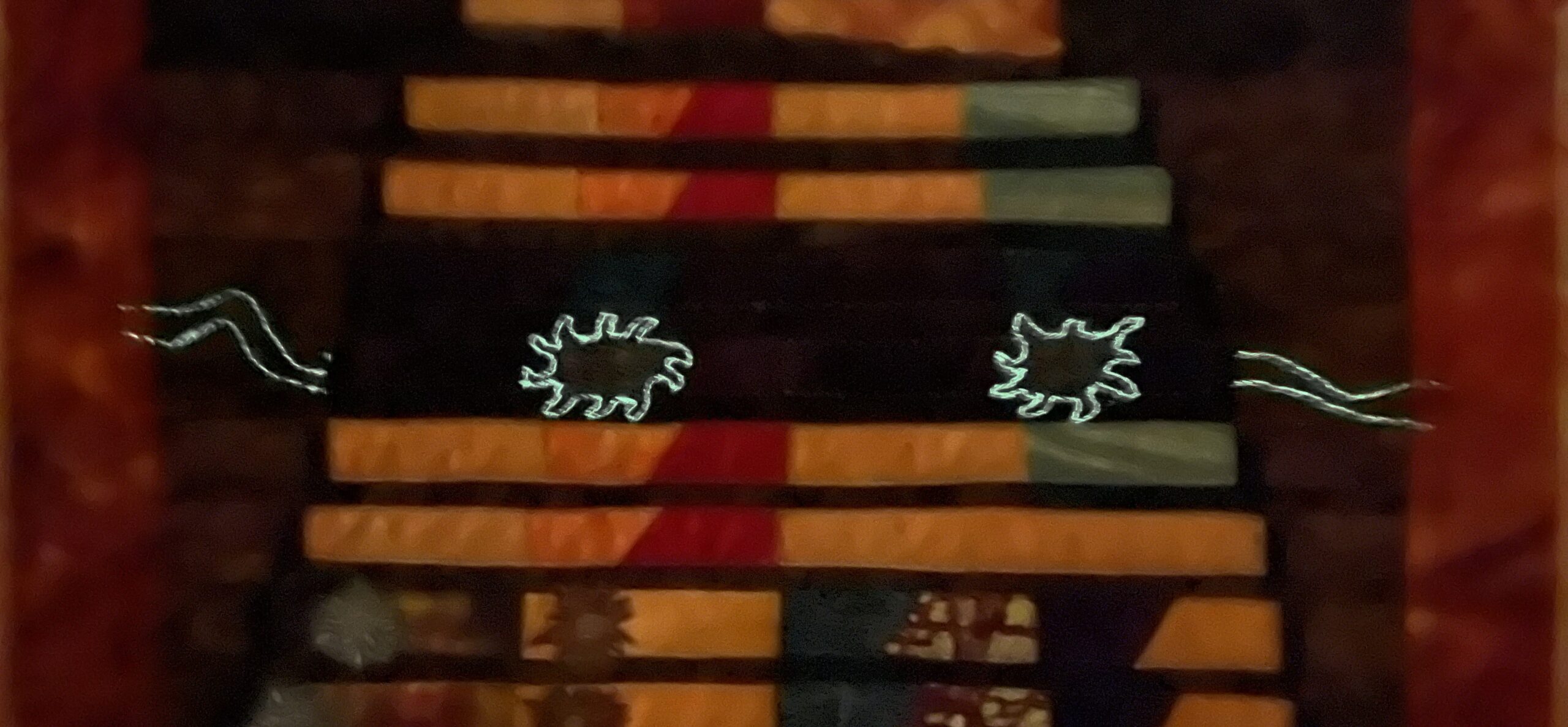
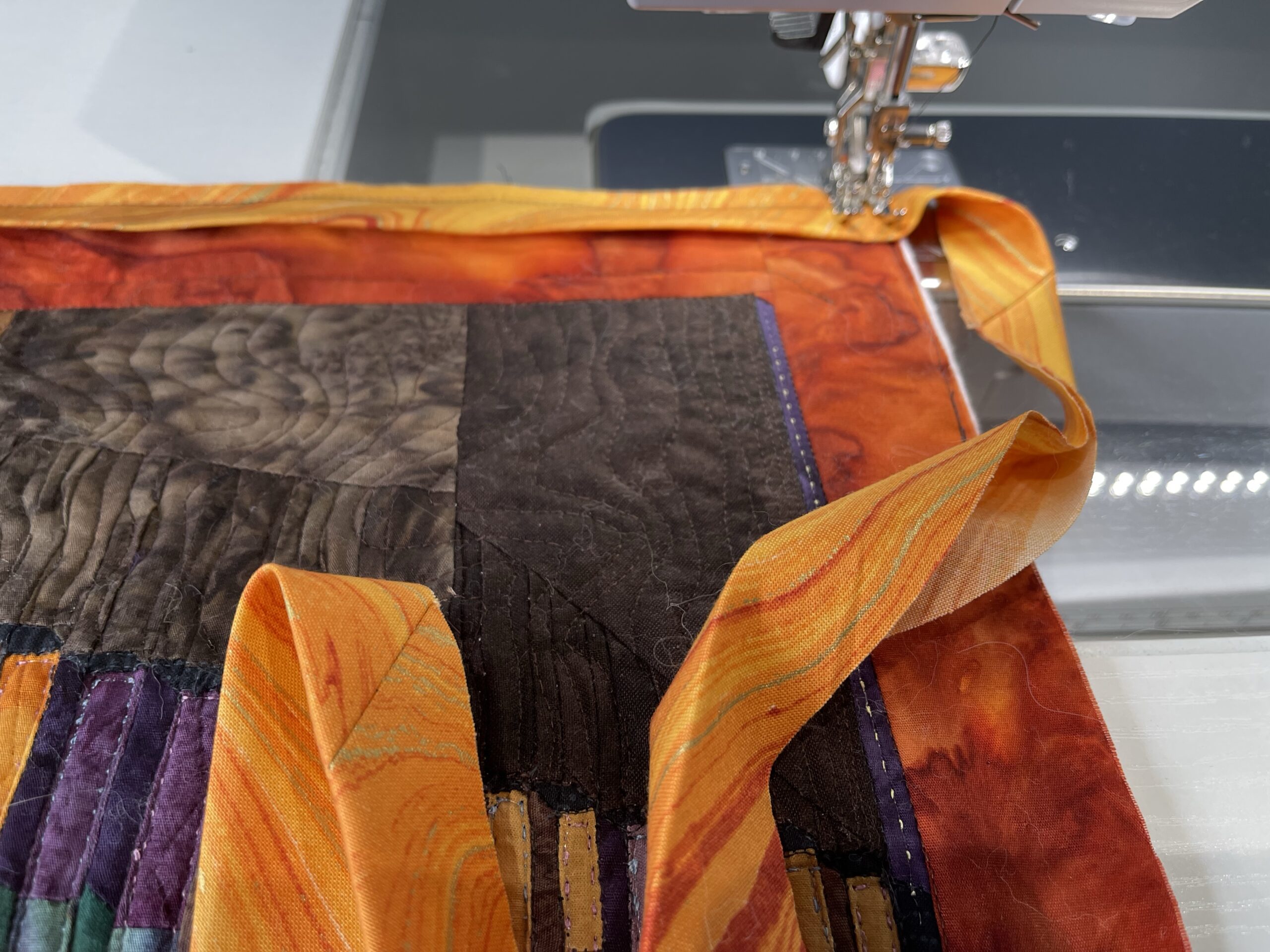
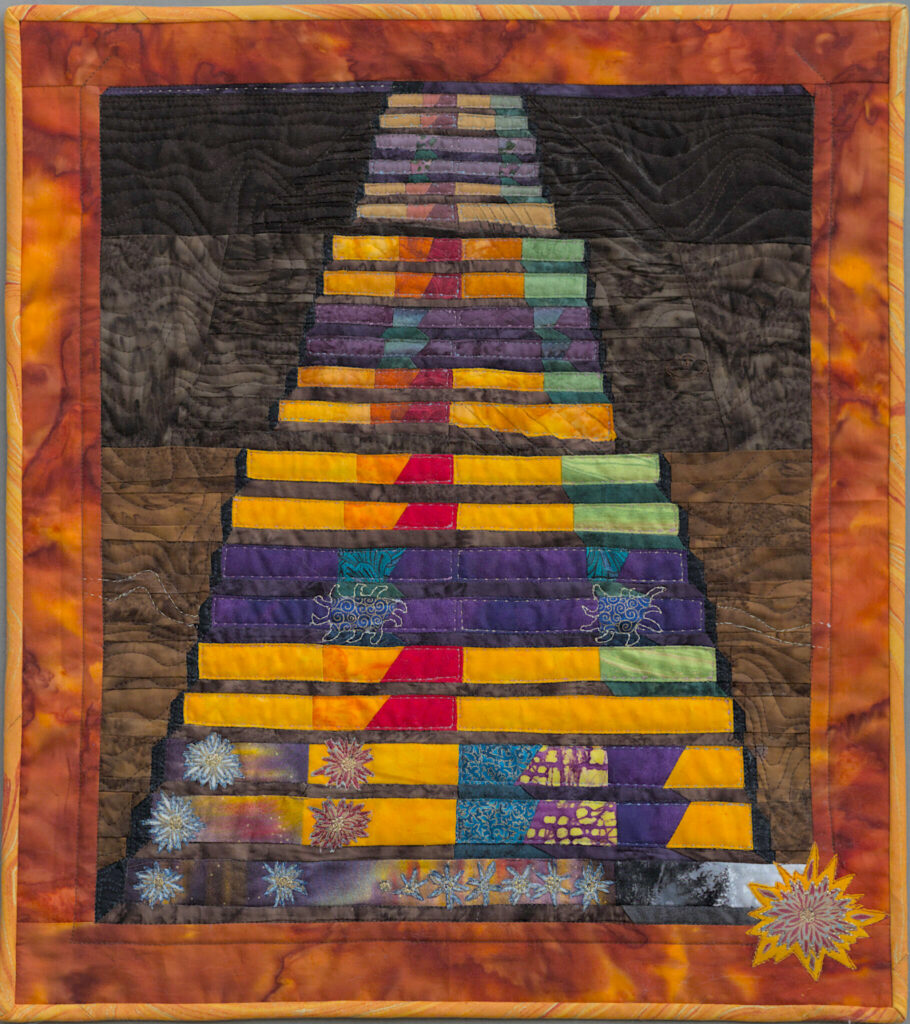
Epilogue
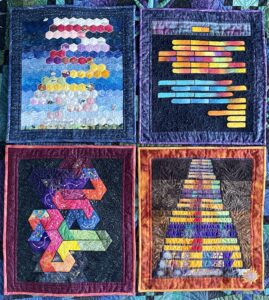
More than two years in the making, my four Peer Gynt quilts were complete. What had I learned?
Technically, I learned a couple of new piecing techniques. Each of the four quilts was constructed using a different technique; while I’d done traditional machine quilting and foundation paper piecing before, English paper piecing and appliqué were new to me. I learned to detest invisible thread, and I learned a fair bit of sewing machine maintenance.
Creatively, I learned fabric painting and how to design a quilt from scratch. I learned about colour theory and that my stash was heavy in my favourite colours at the expense of colours that I needed.
Musically, I became very familiar with these four movements, newly noticing subtleties that sometimes made it into the quilts. I learned that there is definitely no algorithm for turning a piece of music into a visual form: each piece of music has its own conventions, themes, and symmetries.
Would I do this project again with another piece of music? Hell, no. I understand now why Anne Adams stopped at one. But as I walk past these quilts hanging in the hallway, I can read them like sheet music and smile as the music comes back to me.
This is part 4 in a series of four.
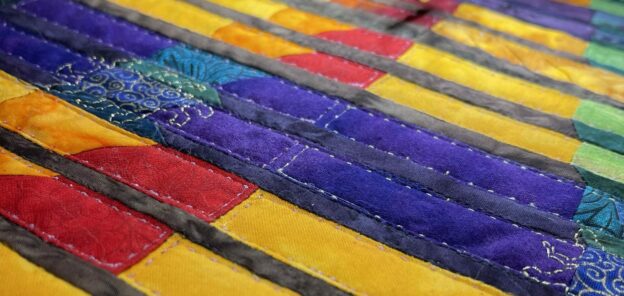
Leave a Reply